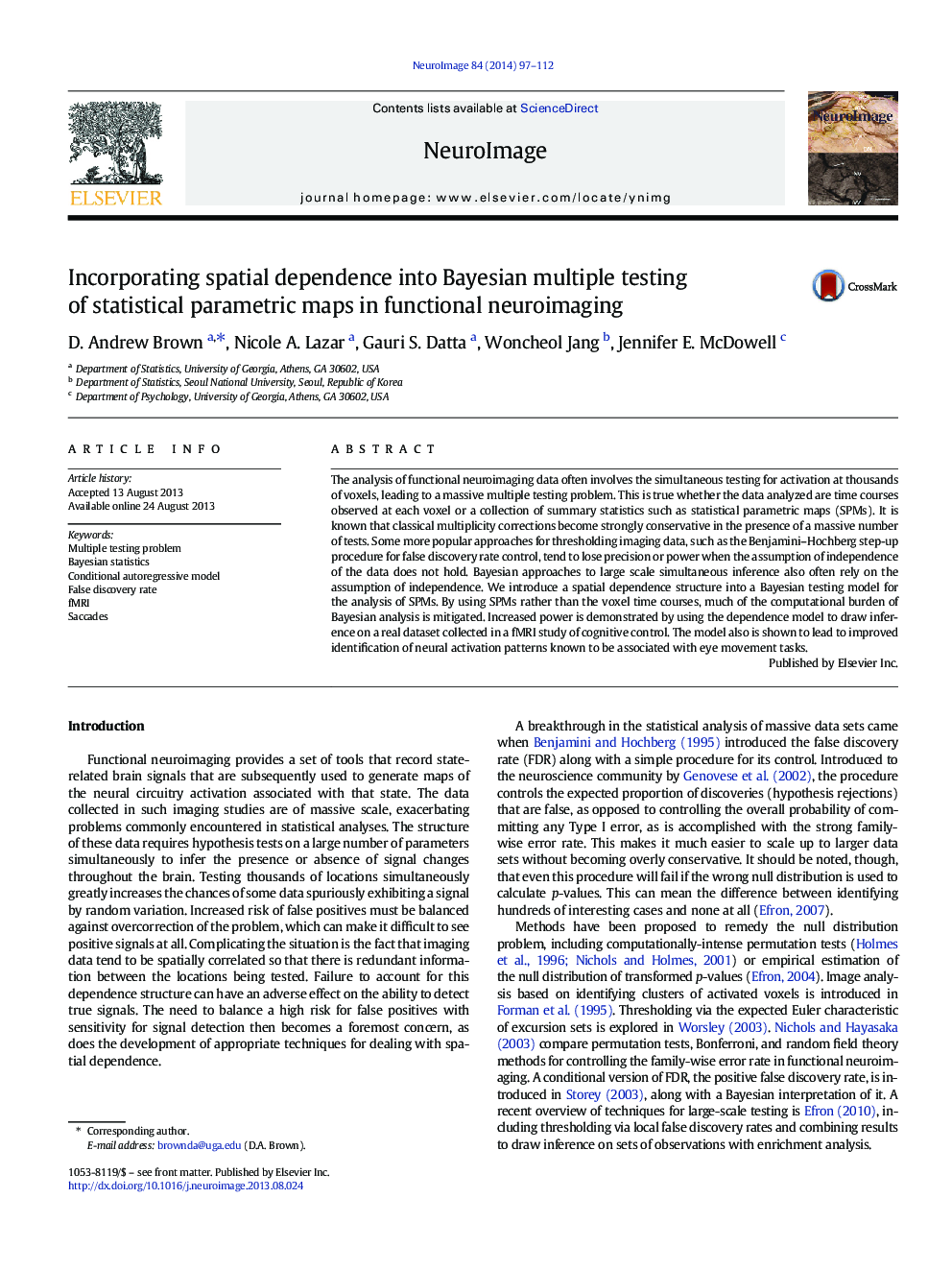| Article ID | Journal | Published Year | Pages | File Type |
|---|---|---|---|---|
| 6028400 | NeuroImage | 2014 | 16 Pages |
Abstract
The analysis of functional neuroimaging data often involves the simultaneous testing for activation at thousands of voxels, leading to a massive multiple testing problem. This is true whether the data analyzed are time courses observed at each voxel or a collection of summary statistics such as statistical parametric maps (SPMs). It is known that classical multiplicity corrections become strongly conservative in the presence of a massive number of tests. Some more popular approaches for thresholding imaging data, such as the Benjamini-Hochberg step-up procedure for false discovery rate control, tend to lose precision or power when the assumption of independence of the data does not hold. Bayesian approaches to large scale simultaneous inference also often rely on the assumption of independence. We introduce a spatial dependence structure into a Bayesian testing model for the analysis of SPMs. By using SPMs rather than the voxel time courses, much of the computational burden of Bayesian analysis is mitigated. Increased power is demonstrated by using the dependence model to draw inference on a real dataset collected in a fMRI study of cognitive control. The model also is shown to lead to improved identification of neural activation patterns known to be associated with eye movement tasks.
Related Topics
Life Sciences
Neuroscience
Cognitive Neuroscience
Authors
D. Andrew Brown, Nicole A. Lazar, Gauri S. Datta, Woncheol Jang, Jennifer E. McDowell,
